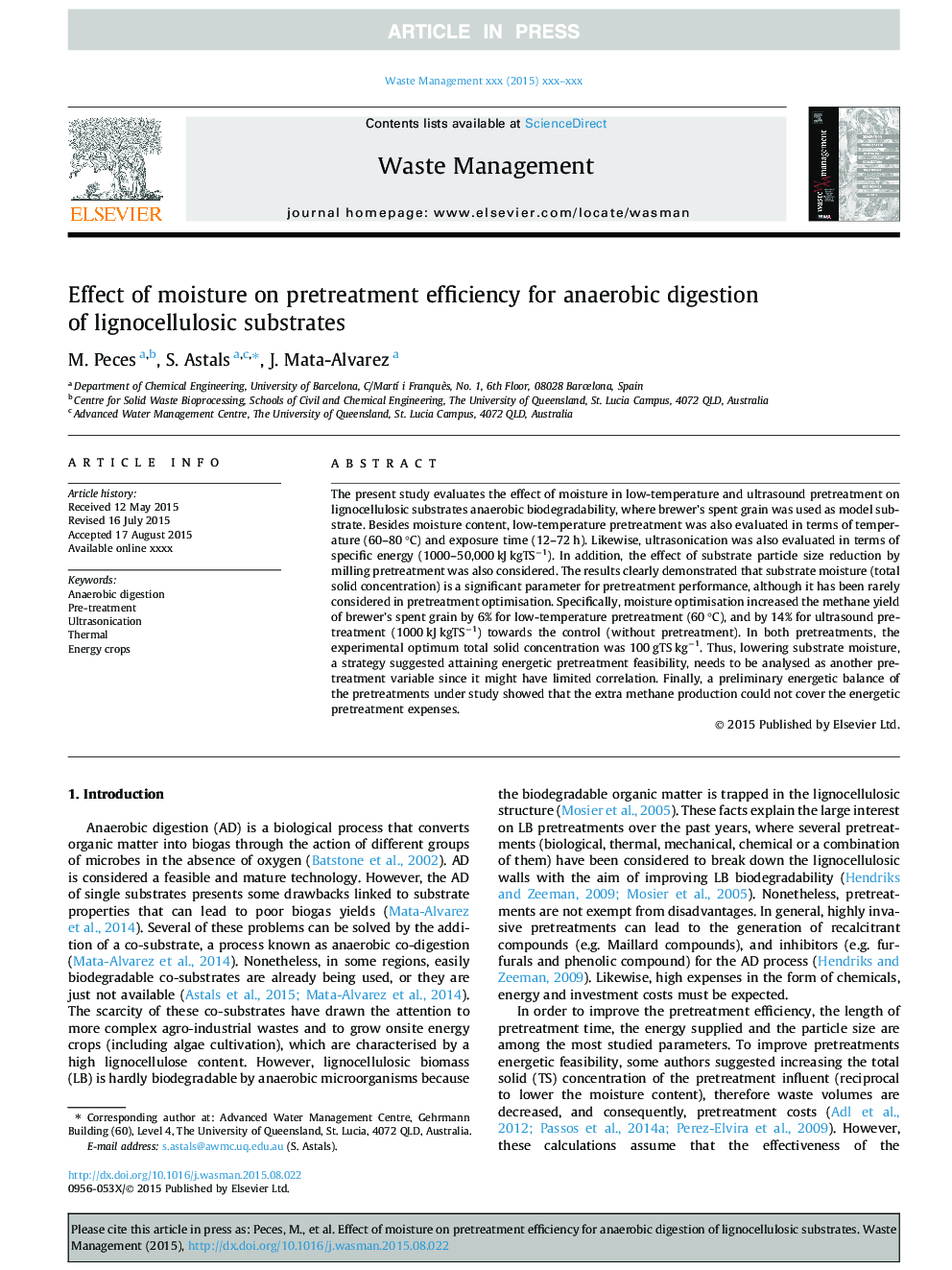| Article ID | Journal | Published Year | Pages | File Type |
|---|---|---|---|---|
| 6354439 | Waste Management | 2015 | 8 Pages |
Abstract
The present study evaluates the effect of moisture in low-temperature and ultrasound pretreatment on lignocellulosic substrates anaerobic biodegradability, where brewer's spent grain was used as model substrate. Besides moisture content, low-temperature pretreatment was also evaluated in terms of temperature (60-80 °C) and exposure time (12-72 h). Likewise, ultrasonication was also evaluated in terms of specific energy (1000-50,000 kJ kgTSâ1). In addition, the effect of substrate particle size reduction by milling pretreatment was also considered. The results clearly demonstrated that substrate moisture (total solid concentration) is a significant parameter for pretreatment performance, although it has been rarely considered in pretreatment optimisation. Specifically, moisture optimisation increased the methane yield of brewer's spent grain by 6% for low-temperature pretreatment (60 °C), and by 14% for ultrasound pretreatment (1000 kJ kgTSâ1) towards the control (without pretreatment). In both pretreatments, the experimental optimum total solid concentration was 100 gTS kgâ1. Thus, lowering substrate moisture, a strategy suggested attaining energetic pretreatment feasibility, needs to be analysed as another pretreatment variable since it might have limited correlation. Finally, a preliminary energetic balance of the pretreatments under study showed that the extra methane production could not cover the energetic pretreatment expenses.
Related Topics
Physical Sciences and Engineering
Earth and Planetary Sciences
Geotechnical Engineering and Engineering Geology
Authors
M. Peces, S. Astals, J. Mata-Alvarez,
